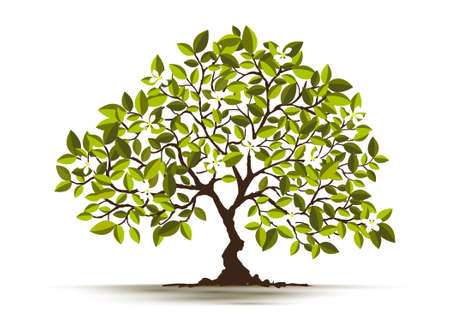Introduction: The Significance of Money Plants in Indian Homes
In the heart of every Indian home, amidst the fragrant incense and vibrant tapestries, the humble money plant (Epipremnum aureum) finds a special place. Celebrated for its lush green leaves and trailing vines, this beloved indoor plant is much more than mere decor—it is deeply woven into the cultural, spiritual, and aesthetic fabric of Indian households. Across generations, families have cherished the money plant for its auspicious symbolism and believed it to be a harbinger of prosperity, health, and harmony.
According to traditional Vastu Shastra—India’s ancient architectural science—the placement of a money plant holds powerful energy-balancing effects. It is said to attract positive vibrations when positioned in the southeast corner of your living space, inviting wealth and abundance into the family. Similarly, Feng Shui, an influential philosophy from neighbouring cultures embraced by many Indians today, regards the money plant as a magnet for good luck and financial growth when nurtured indoors. Its heart-shaped leaves are thought to symbolize enduring relationships and emotional healing, making it a common housewarming gift among friends and relatives.
Beyond these beliefs, the money plant also offers undeniable aesthetic value. Its glossy foliage brings a refreshing touch of nature to urban apartments and ancestral homes alike, blending seamlessly with both traditional wooden furniture and modern minimalist interiors. Whether cascading down from ornate brass pots or climbing up trendy wall trellises, the money plant breathes life into every corner while echoing timeless Indian values of harmony with nature. In this article, let us explore how you can creatively incorporate money plants into your home decor—the Indian way—by weaving together age-old customs and contemporary inspirations.
Traditional Money Plant Decor Ideas
In Indian homes, the money plant is much more than just an ornamental green. It is a beloved symbol of prosperity and positive energy, deeply woven into our cultural fabric. Traditional ways of nurturing and displaying the money plant not only enhance home décor but also align with ancient beliefs like Vastu Shastra and Feng Shui, which are cherished by families across India.
Classic Placement for Prosperity
Indian households often follow time-honoured practices when it comes to positioning their money plants:
| Placement Area | Cultural Significance | Reason |
|---|---|---|
| Near Main Entrance | Welcoming Wealth & Luck | Believed to attract positive energies as guests enter the home |
| Southeast Corner (as per Vastu) | Financial Growth | This direction is ruled by Lord Ganesha and Venus, both associated with wealth and harmony |
| Living Room Corners | Maintaining Harmony | Avoids clutter and keeps energy circulating smoothly throughout the space |
The Elegance of Traditional Pots
The choice of pot plays a significant role in Indian décor aesthetics. Brass and terracotta pots are classic favourites, revered for their beauty and spiritual connotations:
- Brass Urulis: Symbolise purity and tradition; often filled with water, floating flowers, and a lush money plant vine to create a welcoming entrance or pooja room accent.
- Terracotta Planters: Earthy textures blend harmoniously with desi interiors, keeping the plant’s roots cool while adding a rustic charm to verandahs or balconies.
- Copper Pots: Occasionally used for their antimicrobial properties and auspicious sheen, especially during festive seasons.
Caring Rituals Passed Down Generations
Elders in Indian homes often share age-old tips on nurturing the money plant—such as watering it on auspicious days like Fridays, tying a red thread around its stem for protection, or placing a small idol of Lakshmi nearby to invite abundance. These rituals infuse daily life with intention, turning simple greenery into a living talisman.
An Enduring Legacy in Home Décor
The traditional approach to decorating with money plants reflects our connection to nature and reverence for customs. Whether hanging from jute ropes near sunlit windows or trailing elegantly along stair railings, these timeless ideas continue to flourish in every generation of Indian homes.

3. Modern Styling with Money Plants
In today’s rapidly evolving Indian homes, the money plant has gracefully adapted to modern aesthetics without losing its age-old charm. For urban dwellers seeking to balance tradition and trend, incorporating money plants into contemporary interiors is both a creative journey and a celebration of green living.
Vertical Gardens: The Urban Oasis
Space is a luxury in many Indian cities, making vertical gardens an innovative solution. By growing money plants on wall-mounted panels or trellises, you not only save precious floor space but also create striking living art. These green walls bring a sense of freshness and tranquillity, perfect for high-rise apartments in Mumbai or compact homes in Bengaluru.
Glass Jars: Minimalist Chic
Glass jars have become a favourite among young Indian homeowners who love minimalism with a touch of elegance. Simply place cuttings of money plant in water-filled glass jars and let their roots weave intricate patterns visible through the transparent container. Arrange them on your window sill or study table for that Instagram-worthy look—effortless yet sophisticated.
Macramé Hangers: Boho Meets Desi
For those who adore a blend of bohemian flair and Indian sensibility, macramé hangers are perfect for displaying money plants. Hang them near balconies or reading nooks; the cotton threads harmonise beautifully with wooden furniture and earthy tones often found in Indian décor. This style adds a playful vibe while keeping the greenery at eye level.
Minimalist Planters: Less is More
Sleek ceramic pots in neutral shades are an excellent choice for modern Indian interiors that favour clean lines and subtle luxury. Place a single stalk or trailing vine of money plant in these planters and set them on coffee tables or entryway consoles. The understated beauty of the planter allows the vibrant green leaves to take centre stage, embodying the ‘less is more’ philosophy popular among India’s new-age decorators.
Celebrating Modern Indian Living
With these contemporary approaches, money plants become more than just auspicious symbols—they emerge as statement pieces that reflect personal taste and evolving lifestyles. Whether you live in a chic Gurgaon apartment or a cosy Chennai flat, modern styling with money plants brings together positivity, practicality, and panache for every Indian home.
4. Money Plant Placement Tips for Prosperity
In Indian homes, the placement of the money plant is believed to play a crucial role in attracting wealth, positivity, and vibrant energy. Rooted deeply in Vastu Shastra and traditional customs, the right direction and location can amplify the auspicious benefits of this beloved plant. Below, you’ll discover tailored guidance for arranging your money plants to invite prosperity into your home.
Vastu-Recommended Directions for Money Plant
| Direction | Significance | Placement Advice |
|---|---|---|
| South-East (Agni Kon) | Associated with Goddess Lakshmi and wealth accumulation | Ideal for living rooms or offices; avoid placing near red objects or kitchen fire |
| North | Brings career growth and new opportunities | Best for home entrances or study areas; ensure ample indirect light |
| East | Enhances health and family harmony | Suitable for balconies or window sills; keep leaves clean and dust-free |
| Avoid West & North-East Corners | May attract negative energies or financial obstacles according to Vastu experts | If unavoidable, balance with spiritual symbols like Om or Ganesha idols nearby |
Local Indian Customs for Placement
- Main Door: Placing a money plant near the main door welcomes fresh energy and prosperity into the household.
- Pooja Room: Avoid keeping money plants inside pooja rooms as it may conflict with spiritual sanctity.
- Bedroom: If kept in bedrooms, place on the left side of the bed to encourage positive relationships and restful sleep.
- Avoid Direct Sunlight: Indian summers can be harsh; protect your money plant from direct sunlight to prevent leaf burn.
- No Thorny Plants Nearby: According to tradition, never place money plants next to thorny or cactus plants as they are believed to counteract prosperity energies.
Cultural Tips for Everyday Care
- Copper Pot Tradition: In some regions, growing money plants in copper pots is considered highly auspicious as copper is said to amplify positive vibrations.
- Tulsi Proximity: Avoid placing money plants directly next to Tulsi (Holy Basil), as both have different energetic influences within Hindu beliefs.
- Water Offerings: Watering your money plant on Fridays while chanting Lakshmi mantras is a cherished practice among many Indian families.
Create Your Own Prosperous Corner
Select a vibrant ceramic pot or recycled bottle, decorate with rangoli designs at the base, and position your money plant in an area that receives filtered sunlight—this not only honours tradition but also brings a touch of garden-inspired beauty into your home decor. Following these placement tips ensures your money plant becomes a true symbol of abundance and positivity within your Indian abode.
5. DIY & Upcycled Ideas for Money Plant Displays
Bringing the lush charm of the money plant into your Indian home doesn’t have to be expensive or complicated. With a dash of creativity and a mindful approach to sustainability, you can craft stunning displays using everyday items that echo both traditional and modern aesthetics.
Recycled Bottles: Urban Elegance Meets Eco-Friendly Style
Transform old glass bottles into elegant planters by painting them in vibrant hues or wrapping them with jute ropes and colourful threads. Hang these bottle planters near windows or balcony grills, letting the trailing vines dance in the natural light—an urban-chic statement with a conscious twist.
Coconut Shells: A Nod to Nature and Tradition
Embrace the earthy essence of India by upcycling coconut shells into rustic planters. Simply clean, polish, and drill small drainage holes at the bottom. These mini pots look charming when arranged on brass trays or wooden shelves, especially when adorned with traditional rangoli patterns or turmeric-coloured motifs for festive flair.
Earthen Pots: Timeless Desi Vibes
Classic terracotta matkas and kulhads are not just for drinking chai—they make beautiful homes for money plants too! Paint them with Warli or Madhubani art for a bespoke touch, or keep them plain for an authentic rural feel. Place these pots on window sills, verandas, or as centrepieces in living rooms to infuse your decor with timeless desi warmth.
Fusion with Traditional Decor Elements
Create unique displays by combining your upcycled planters with brass urulis filled with water and floating diyas, handwoven baskets, or antique wooden stands. Incorporate bandhani fabrics, colourful beads, and mirror work around your plant corners to reflect the vibrant tapestry of Indian culture. These thoughtful touches blend sustainability with heritage, making your money plant not only a symbol of prosperity but also a celebration of artistic ingenuity.
With these budget-friendly ideas, every corner of your home can bloom with personality—where each recycled planter tells a story of tradition, resourcefulness, and green beauty inspired by India’s love for nature and design.
6. Care & Maintenance Tips for Thriving Money Plants
If you wish your money plant to flourish and bring prosperity into your home, a touch of attentive care—rooted in Indian tradition and wisdom—is essential. Here are some practical and organic tips tailored for Indian households.
Watering Routines Suited for Indian Climates
Money plants thrive in humidity but dislike waterlogged roots. In most Indian cities, especially during the summer or monsoon, check the topsoil with your finger; water only when it feels dry. Overwatering can cause yellow leaves, so adjust according to the season—more frequent in hot months, less during winters.
Sunlight Needs: Letting Nature Shine
Place your money plant in bright, indirect sunlight—ideal spots are near east or north-facing windows, as per Vastu Shastra. Avoid harsh afternoon sun, especially in southern India, as it can scorch the leaves. In apartments, balconies with filtered light work beautifully.
Organic Fertilizers from Your Indian Kitchen
Nourish your plant naturally! Crushed eggshells add calcium, while used tea leaves (without milk or sugar) enrich the soil. A spoonful of rice water or buttermilk (chaas) every few weeks keeps foliage lush and green. These kitchen remedies are not just eco-friendly but also budget-friendly and aligned with traditional Indian homemaking.
Quick Routine for Healthy Growth
- Wipe leaves gently with a damp cloth to remove dust and allow better photosynthesis.
- Prune regularly to encourage bushier growth and remove any dried stems or yellow leaves.
- Rotate pots weekly for even light exposure and symmetrical growth.
A Touch of Ritual & Positivity
Many Indian families place their money plant near the entrance or pooja room on Fridays as a symbol of good fortune. While caring for your plant, recite positive affirmations or mantras to infuse your space with auspicious energy—a beautiful blend of tradition and modern living.
7. Conclusion: Merging Tradition & Trend – The Timeless Charm of Money Plants
The journey of decorating Indian homes with money plants beautifully illustrates how age-old traditions and contemporary design philosophies can harmoniously coexist. Rooted in Vastu Shastra and cherished across generations, the money plant has always been more than just a decorative element—it is a living emblem of prosperity, good fortune, and positive energy. Today, as modern Indian homes embrace evolving aesthetics, integrating money plants within sleek interiors, creative wall hangings, or eco-chic terrariums brings a refreshing balance between cultural heritage and present-day style.
This seamless blend allows families to honour their roots while expressing personal taste and creativity. Whether displayed in classic brass urulis near the entrance or cascading from minimalist ceramic planters on urban balconies, money plants remain an ever-green icon—adapting effortlessly to both traditional and modern sensibilities. Ultimately, by merging the spiritual significance of money plants with innovative décor ideas, Indian homes are transformed into vibrant sanctuaries where tradition meets trend, ensuring that the timeless charm of the money plant continues to flourish for generations to come.

